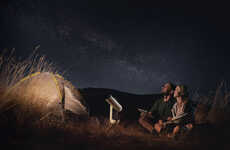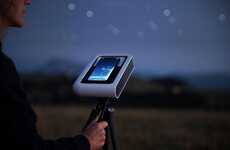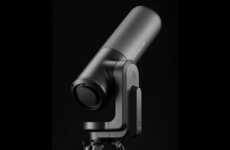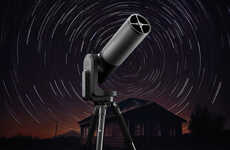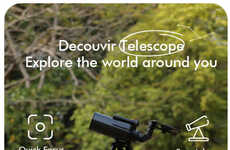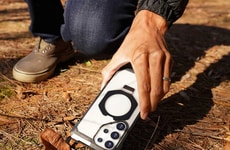
The Vaonis Vespera is a CES 2021 Innovation Awards Honoree
Laura McQuarrie — December 19, 2020 — Tech
References: kickstarter & techaeris
On Kickstarter, the Vaonis Vespera raised over $2.5 million, thanks to the support of thousands of backers who saw the potential for the world's lightest and most powerful exploration station. While there are many barriers to capturing high-quality images of the night sky, this station offers an alternative to equipment that's heavy or technical with a hybrid of a telescope and camera.
The smart, fully automated design combines the power of a mobile device with an app so that exploring the night sky and capturing beautiful images is easier than ever. The intuitive system boasts Star Field Recognition technology, so that Vespera can calibrate itself based on known objects in the sky. The Vaonis Vespera is being recognized as a CES 2021 Innovation Awards honoree.
Image Credit: Vaonis
The smart, fully automated design combines the power of a mobile device with an app so that exploring the night sky and capturing beautiful images is easier than ever. The intuitive system boasts Star Field Recognition technology, so that Vespera can calibrate itself based on known objects in the sky. The Vaonis Vespera is being recognized as a CES 2021 Innovation Awards honoree.
Image Credit: Vaonis
Trend Themes
1. Hybrid Telescope-camera Devices - The combination of telescope and camera technology creates a new market for devices that make astrophotography more user-friendly and accessible.
2. Smart, Automated Telescopes - The integration of mobile technology and automation in telescopes allows for easier and more intuitive exploration of the night sky, with disruptive potential in the education and entertainment industries.
3. Star Field Recognition Technology - Incorporating artificial intelligence and recognition algorithms into telescopes provides new opportunities for both professional and amateur astronomers to capture high-quality images, data, and discoveries.
Industry Implications
1. Astrophotography - The development of hybrid telescope-camera devices has the potential to disrupt the astrophotography industry, making it more accessible to a wider range of photographers and stargazers.
2. Education - Smart, automated telescopes have the potential to revolutionize astronomy education by making it more interactive, immersive, and accessible to students of all ages and backgrounds.
3. Entertainment - Incorporating Star Field Recognition technology and other advanced features into telescopes could create new opportunities for entertainment companies to offer stargazing experiences to consumers, both in-person and online.
4.8
Score
Popularity
Activity
Freshness


